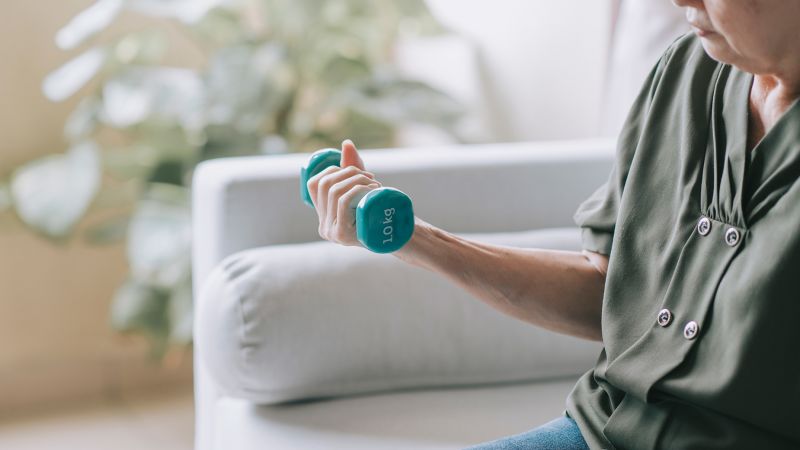CNN
—
Sign up for CNN’s Fitness, But Better newsletter series. Our seven-part guide will help you ease into a healthy routine, backed by experts.
Retirement should be filled with time with loved ones, relaxation and—according to new research—heavy lifting.
As people get older, their skeletal muscle function declines, according to the study published Tuesday in the journal BMJ Open Sport & Exercise Medicine.
“If you do resistance training at this age, benefits in some parameters may last several years,” said lead study author Mads Bloch-Ibenfeldt, a doctoral student at the Institute of Sports Medicine at Bispebjerg Hospital in Copenhagen, Denmark.
To investigate whether resistance exercise programs could be helpful in the long term, researchers performed a randomized control trial with 369 recently retired and healthy adults who were between 64 and 75 years old.
The participants were assigned one of three exercise programs for a year. They either lifted weights three times a week, did moderate-intensity training using their body weight and resistance bands three times a week, or did not change their usual exercise routines, the study said.
Researchers measured their bone and muscle strength as well as body fat levels at the start of the trial at the end of the one-year program and then two and four years later, according to the study. It was up to the individuals whether they continued their strength training regimen or went back to their normal exercise level,
Resistance training with heavy loads yielded the greatest long-lasting benefit in leg strength, the study showed. Even four years after the training, their leg strength was unaltered, whereas the moderate-intensity group did see a decrease – although it wasn’t significant, the study showed.
“Exercise is critically important across the life span. This study does show that even in those engaging in activity later in life around retirement can lead to marked benefits to one’s health,” said Dr. John Batsis, a geriatrician and an associate professor at the University of North Carolina at Chapel Hill in the School of Medicine (Geriatric Medicine) and in the Gillings School of Global Public Health (Nutrition). He was not involved in the research.
The umbrella of exercise includes aerobic, resistance, flexibility and balance activities, Batsis said.
“Each of these have important consequences if one regularly performs them or does not on overall health (including cognition) and physical function,” Batsis said in an email.
You can think of resistance training as “exercises that improve strength by making muscles work against a force,” said CNN fitness contributor Dana Santas, a mind-body coach for professional athletes.
That force can include weights, resistance bands or your own body weight—like with pushups or squats, she added.
“For older adults, resistance training is crucial for maintaining muscle mass, bone density, and mobility,” she said.
According to the recent study, adding heavier weight seems to be important, Bloch-Ibenfeldt said.
One limitation of the exercise proposed in the recent study is that the weighted exercises were done at a gym, which is something not everyone has the time, money or transportation to do, Batsis said.
While you should consult a certified trainer or physical therapist to ensure you are exercising safely, there are things you can do from home, Santas said.
For older adults, it is important to strengthen in ways that are important to functional movements of everyday living, she added.
Santas recommends box squats, where you sit lightly on a chair seat and stand back up. If you don’t need to hold the arms of the chair for support, add some dumbbells, Santas said.
The added weight gives “additional resistance while also improving grip strength, which is essential for functional independence and serves as (a) marker for heart health,” she added.
You can also increase strength in functional movements, protect your knee joints and prevent injury by placing a resistance band around both of your legs and doing side steps, side lunging or reverse lunging, she said.
Try to do two or three sets of eight to 12 of each activity at least a couple of times a week, Santas said.
Regular maintenance of exercise and other health factors are important for independence later in life, Batsis said.
“The basics of lifestyle changes, including nutrition and exercise are a major key to healthy aging,” he added.

